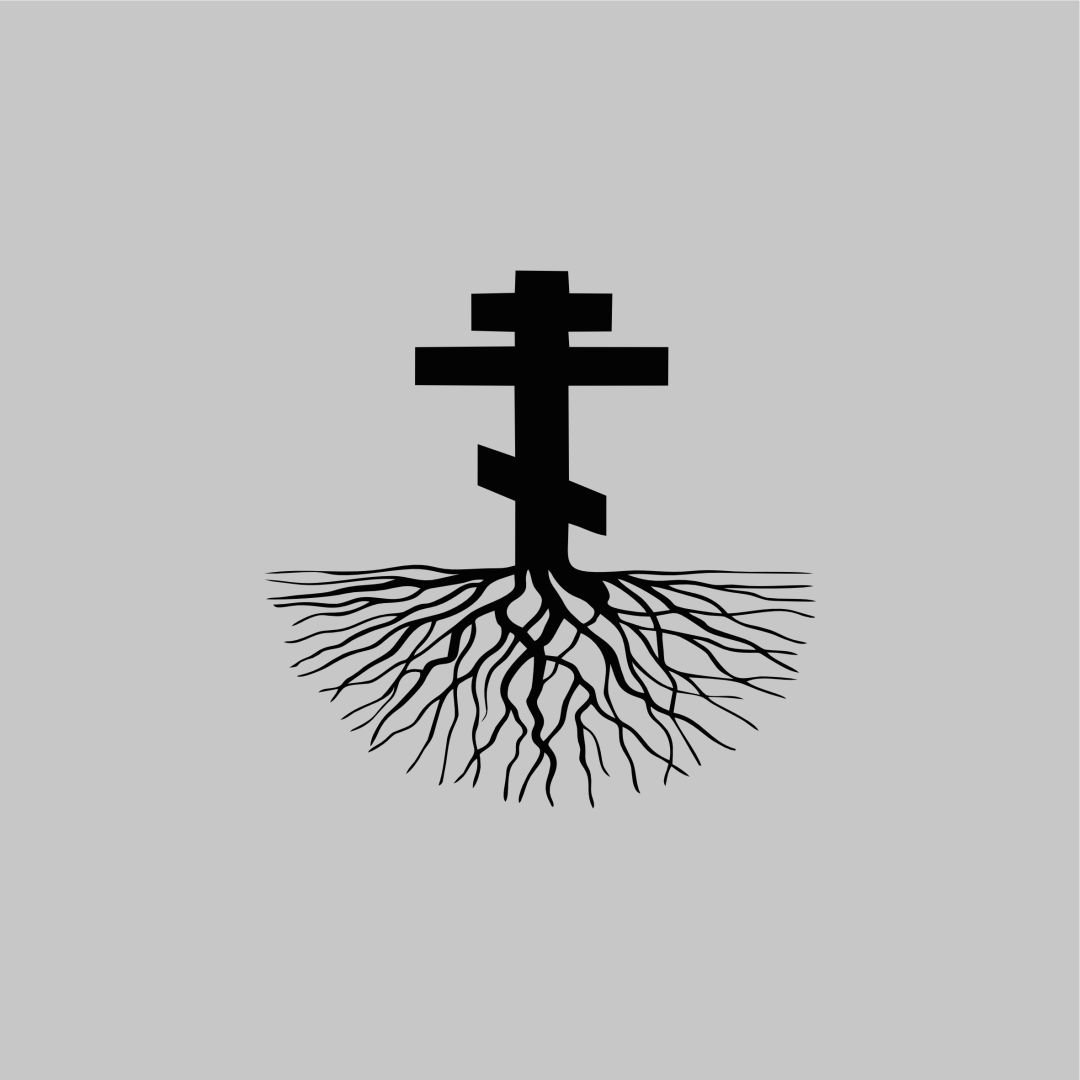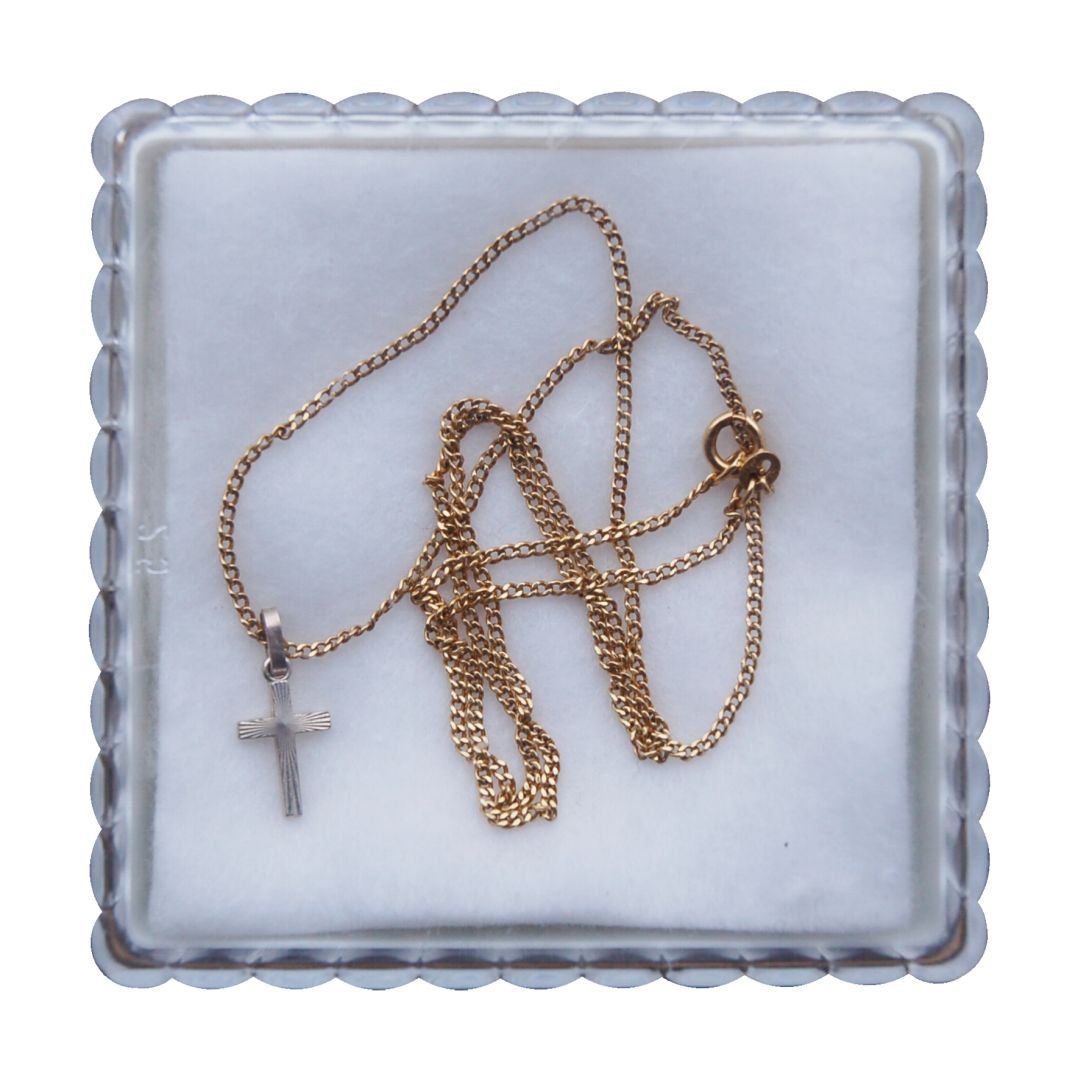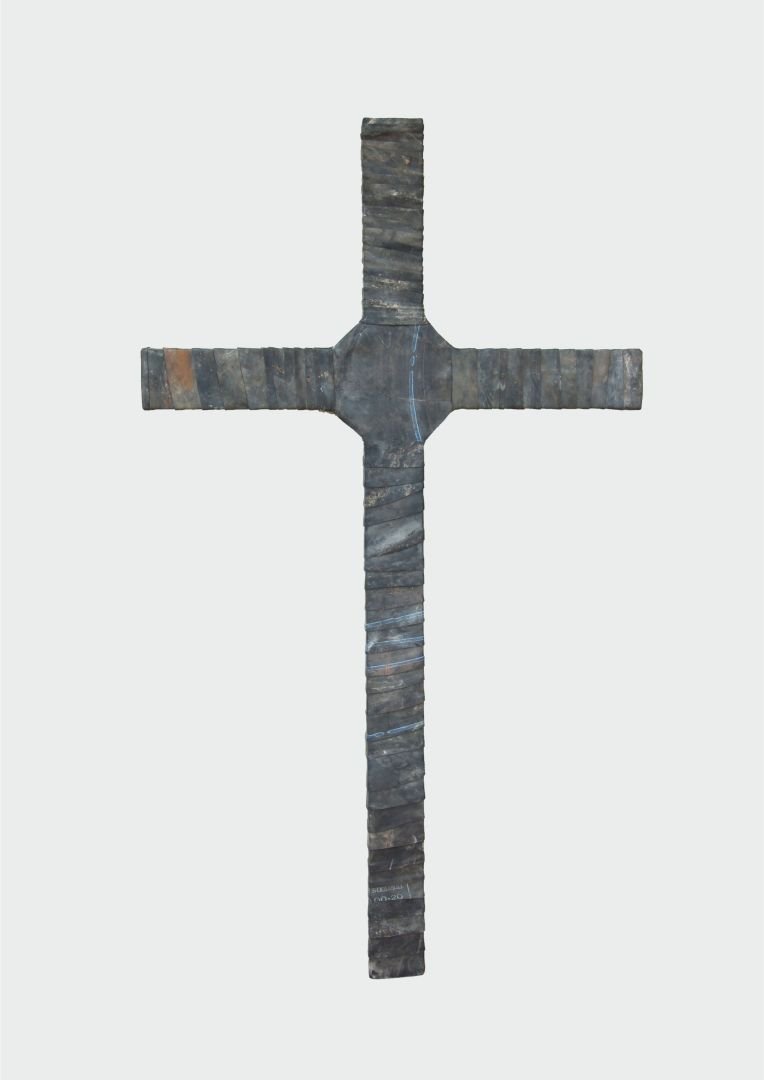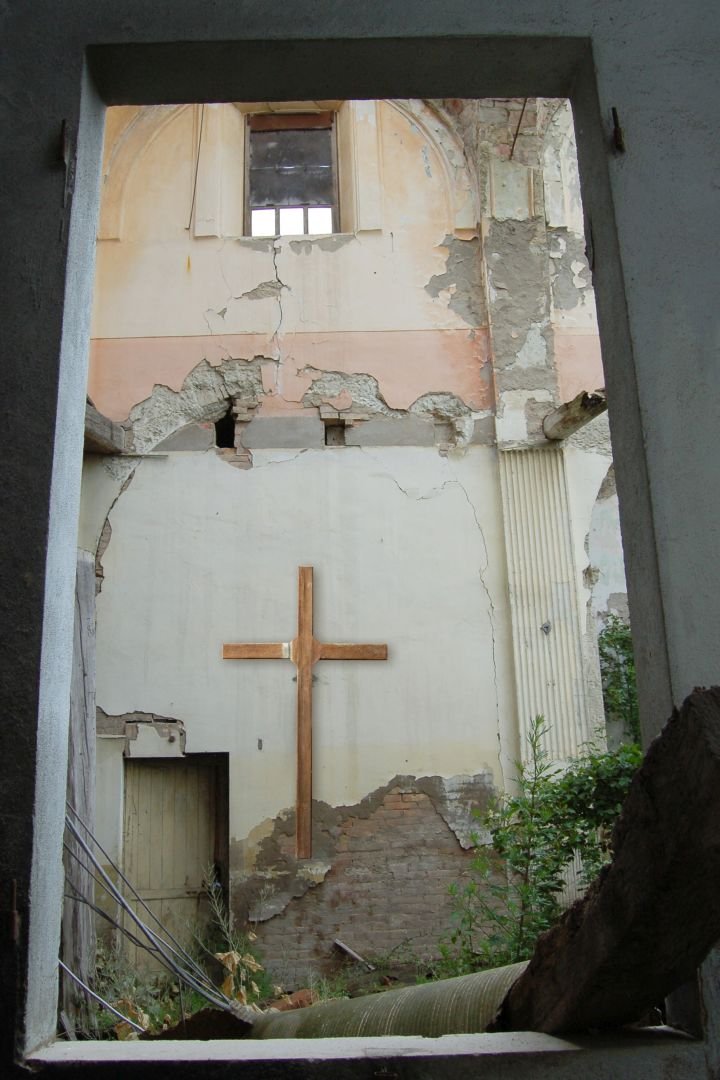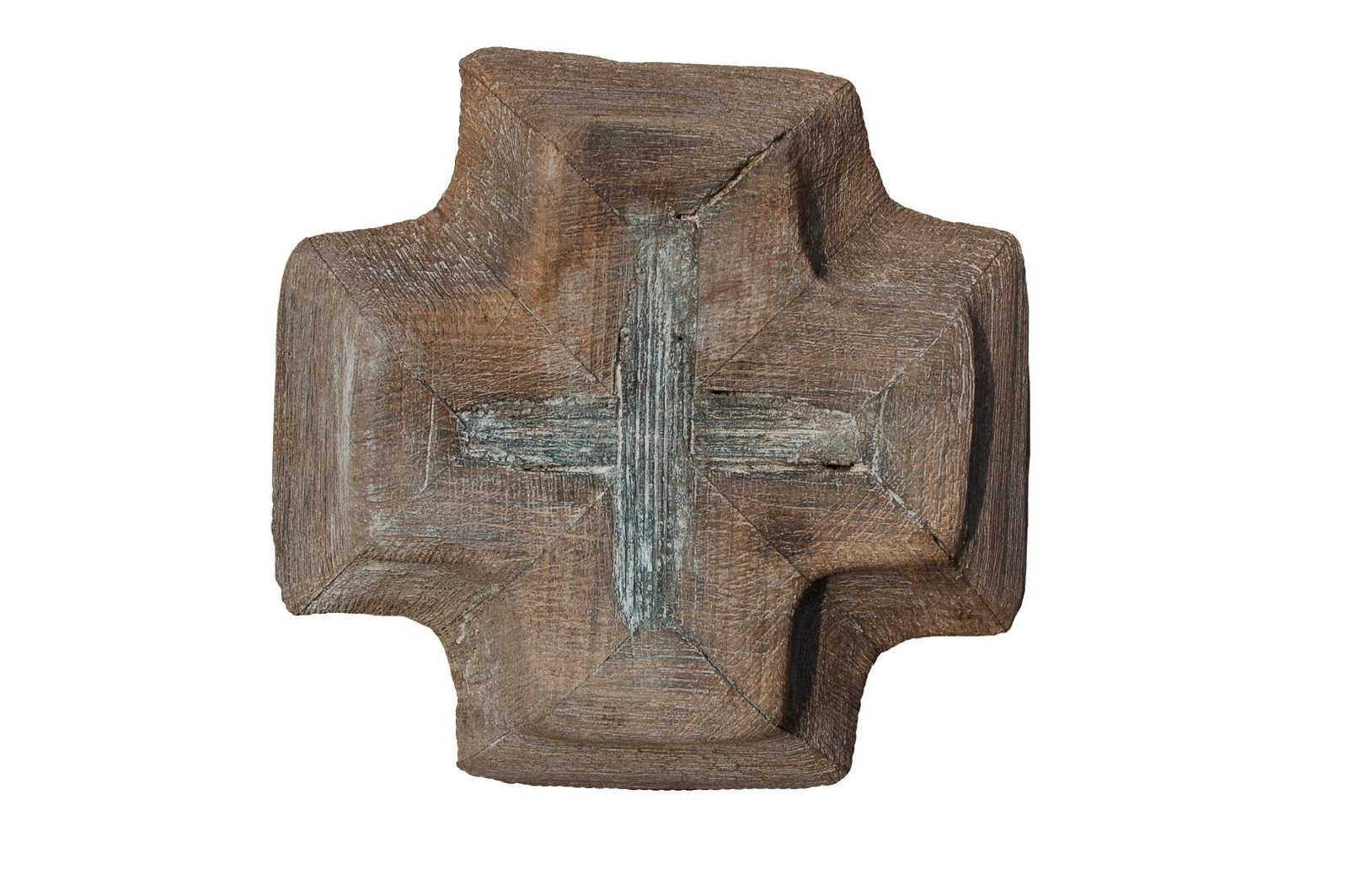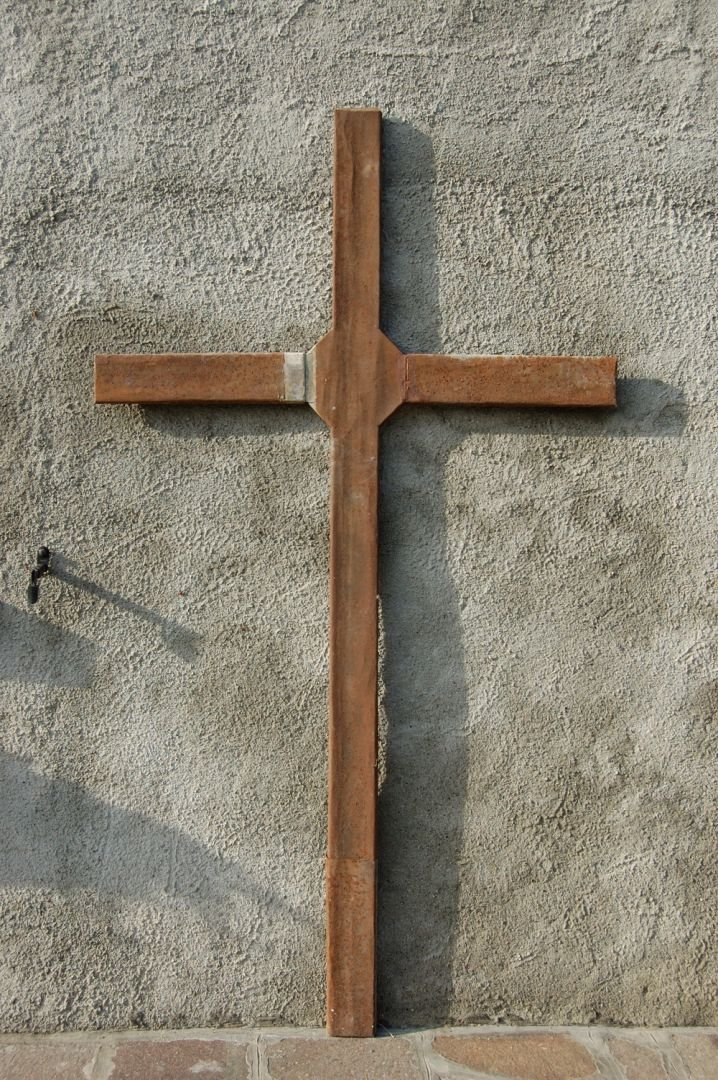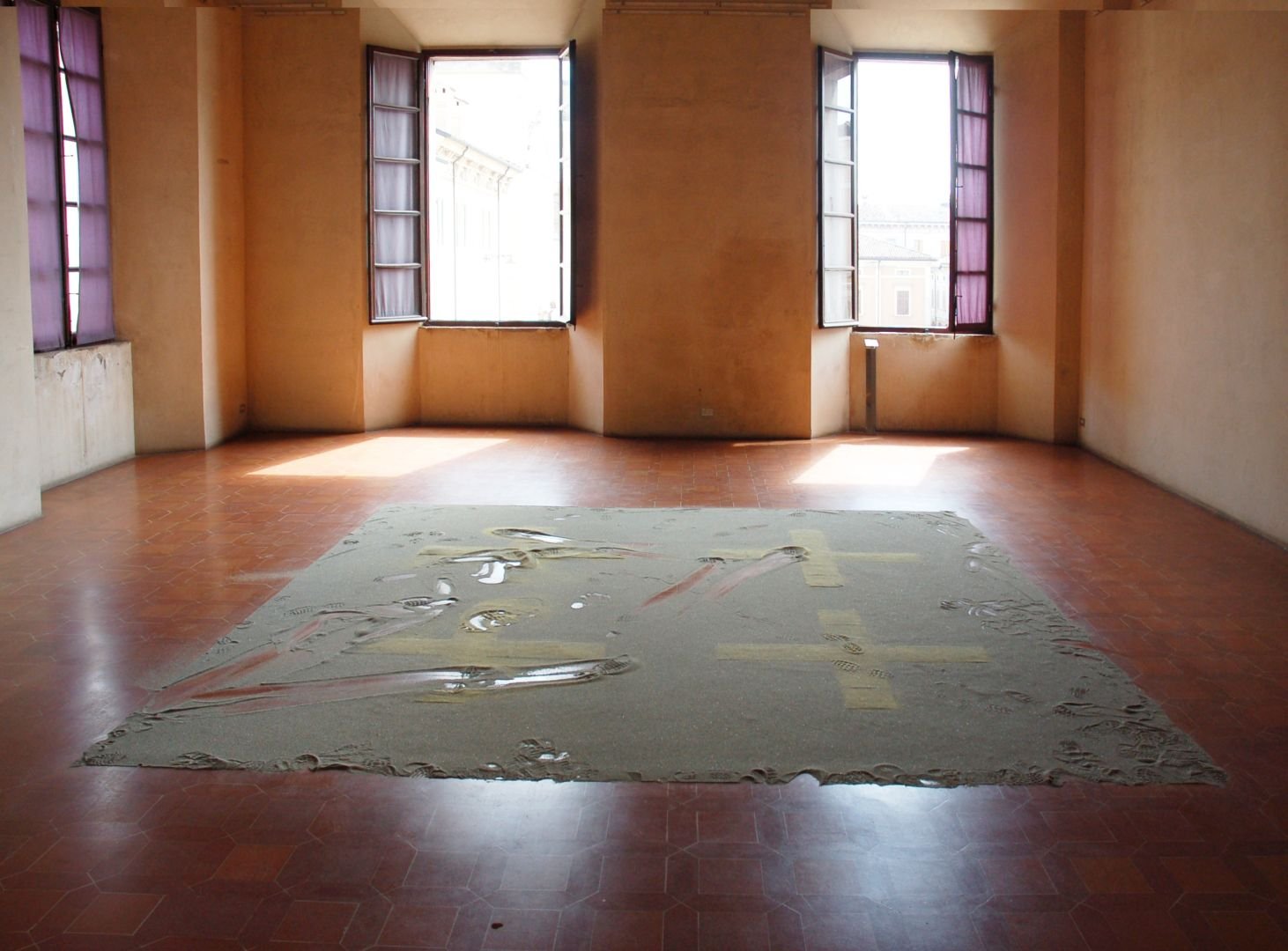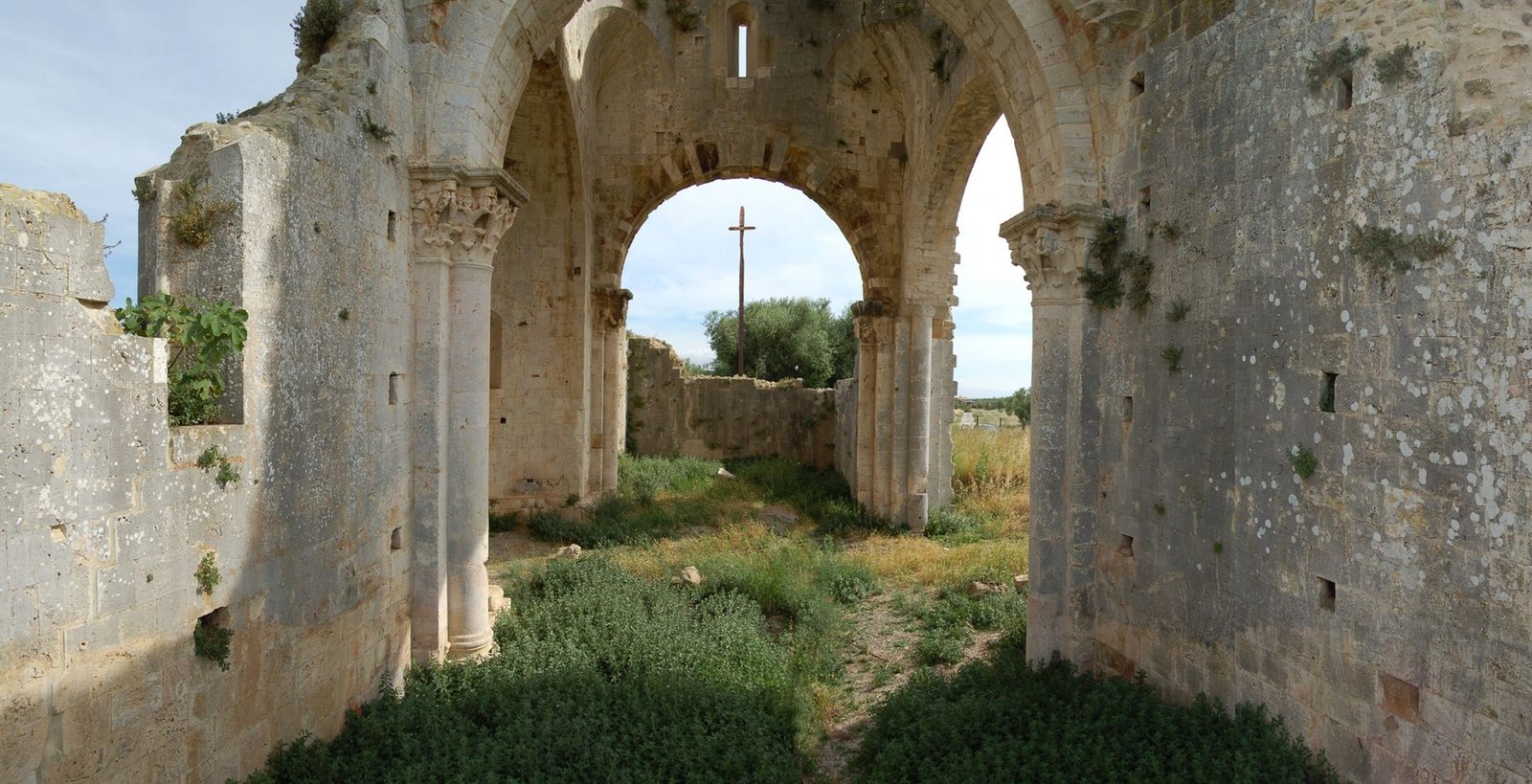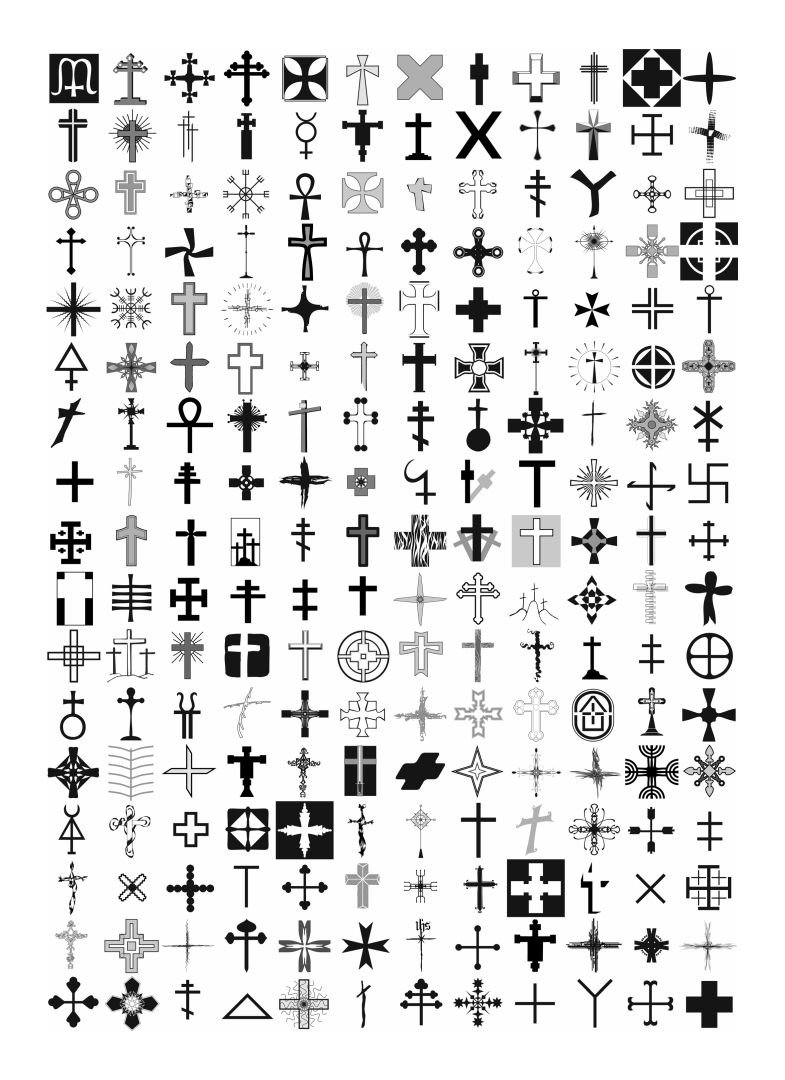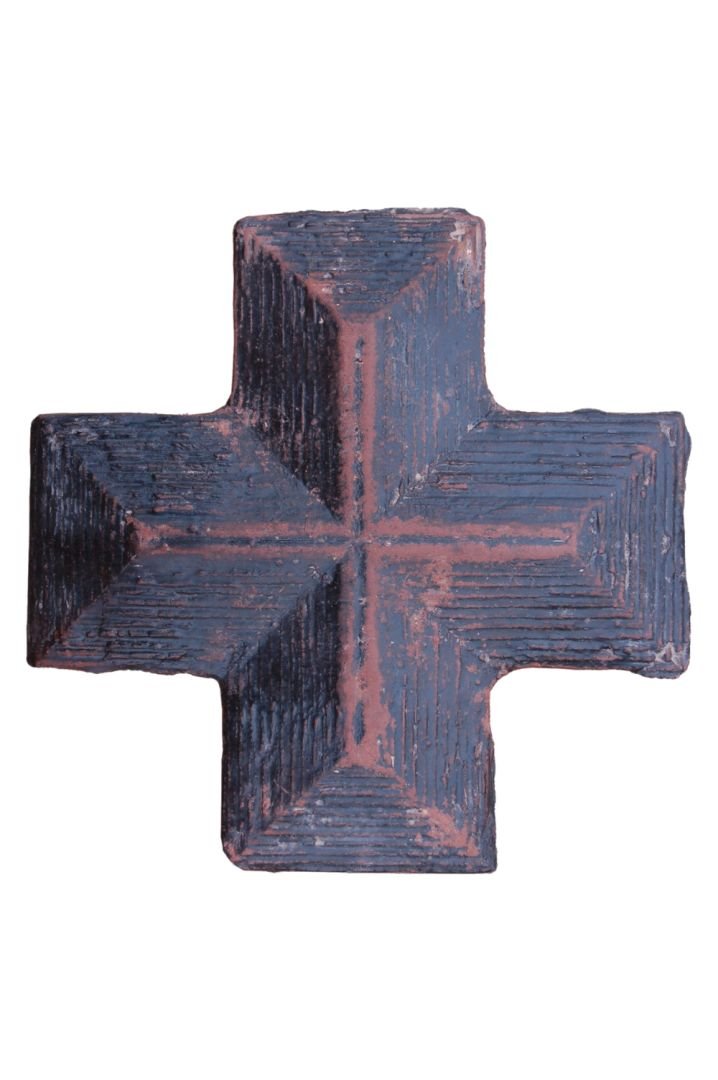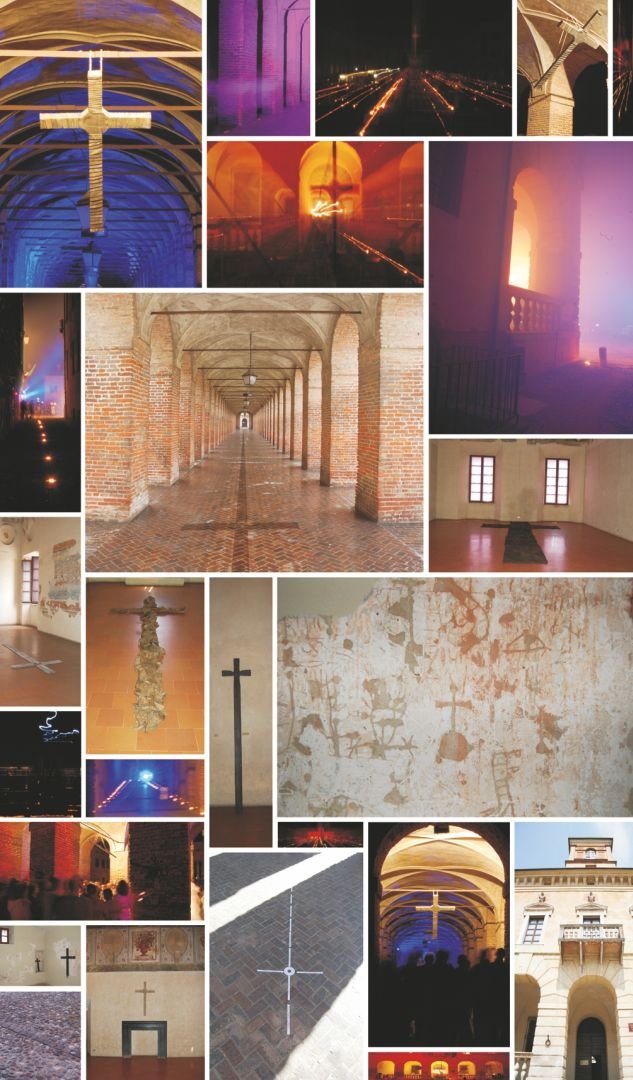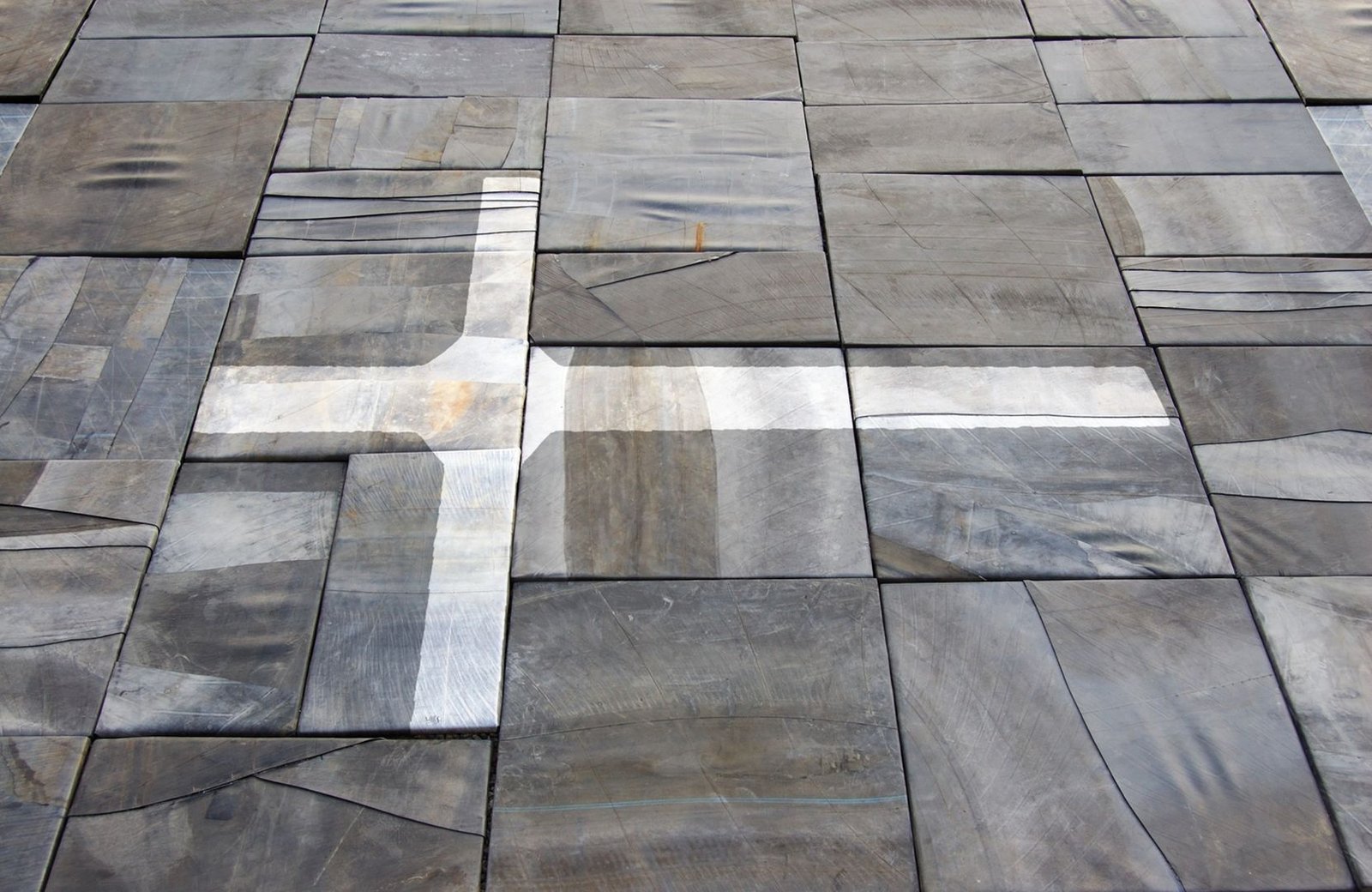Crosses
In the artist’s production, the cross is a strong and long-studied theme, fundamentally for its great value as a primordial symbol. In the Christian world, it is synonymous with Christ crucified, but the cruciform sign is much older than Christianity, widespread in many cultures since prehistory and re-proposed by the artist precisely in its essentiality.
The universality of salvation that Christianity confesses in the cross of Christ is therefore enriched by the multiple and very rich anthropological symbolism of the cruciform sign, a sign that expresses the power of simplicity, clearly visible in these contemporary crosses, albeit with an ancient flavor, mainly wooden, created by the artist for over twenty years.
The universality of this sign has to do with simplicity. The cruciform sign in its most basic form is formed by the meeting of two lines that intersect at a central point from which four directions branch off. The cross also refers to the stylised human figure: a human being in an upright position, with arms outstretched to embrace, to pray, to welcome. If it is true that the shape of the cross appears to characterise the paradigm of homo religiosus in many parts of the world, it, as a cross without divinity, in its bare essentiality refers to the space-time dimension of reality and the body, becomes a measure of being in the cosmos.
Network Symbols Radici
The first one oro-cotone-plastica
Croce di Greccio legno di obece ossidi 177x136x3 cm.
Rubber Crux 182x98x5 cm.
Installazione Baiso (RE)
Croce Miliare legno di samba-ossidi 25x24x6cm.
Sabbioneta (MN) Stauros
Network symbols Frattale
Smart Games Seduction
Croce di monte Sant’Angelo
Iron cross
Sabbioneta (MN) Croce di carta, pioggia-ossidi
Sabbioneta (MN) Sand carpet
Installazione Montiano (GR)
Network Symbols Carmina Cruciata
204 symbols
Croce Miliare legno di samba-ossidi 39x39x4cm.
Omphalos Galleria degli antichi Sabbioneta (MN)
Sabbioneta (MN)
Rubber print

